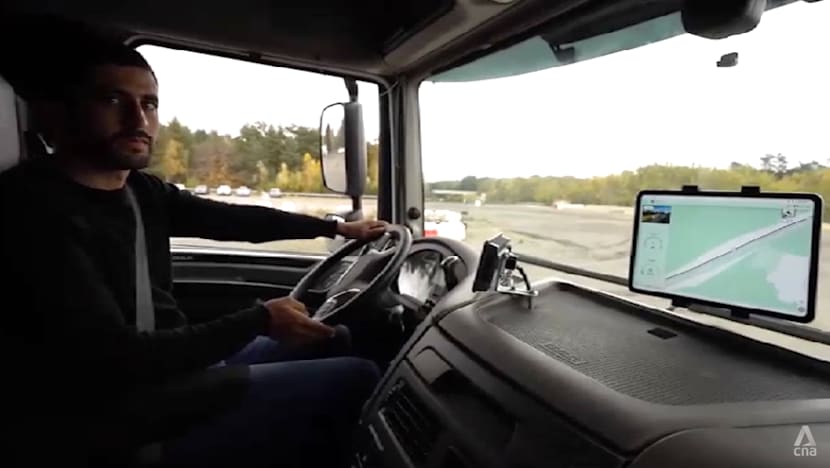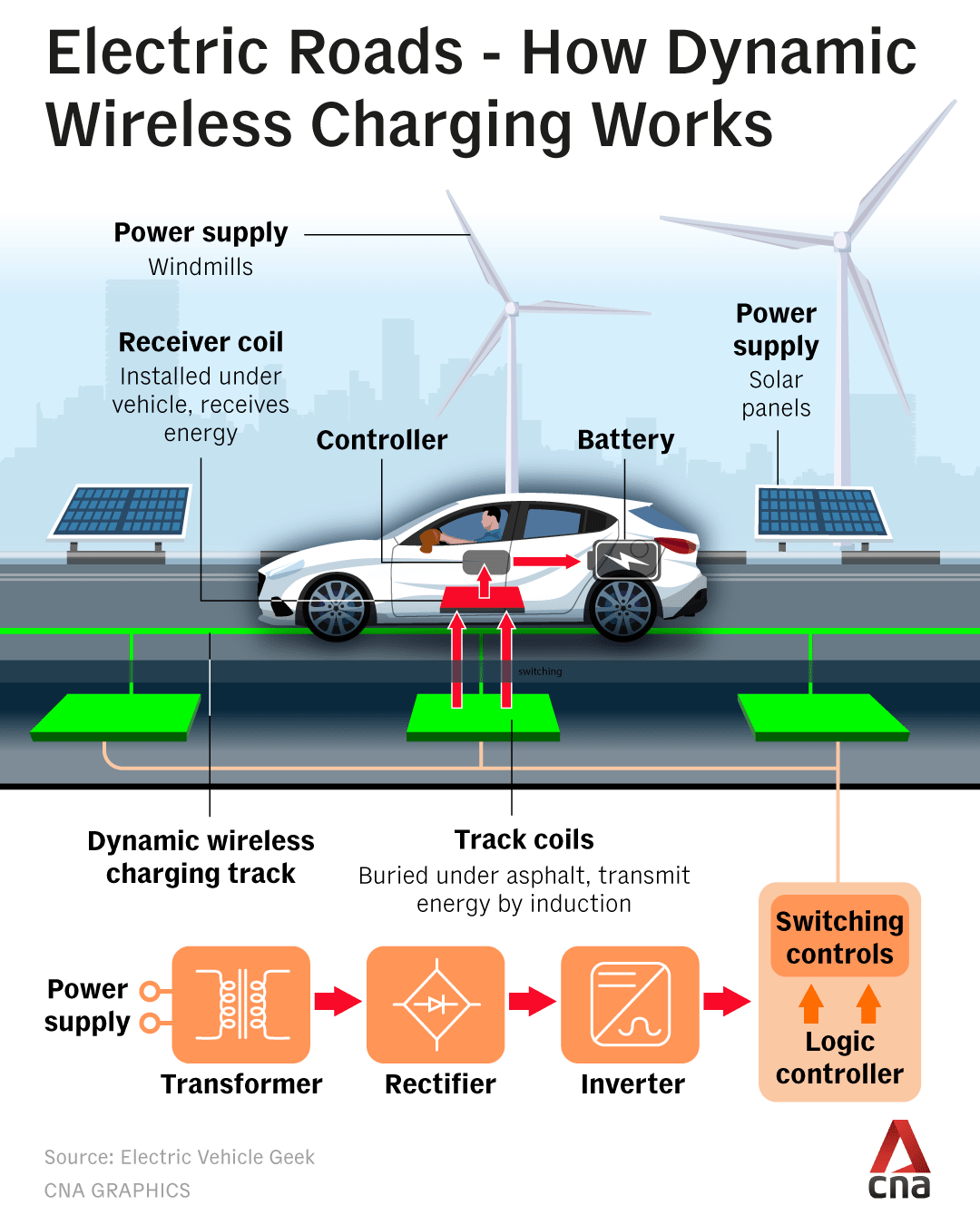Charge as you drive: France trials motorway that powers EVs on the go
The European nation is testing road technology that refuels batteries in moving vehicles without the need to stop and plug.

A man drives his EV along a section of the French A10 motorway, which has been equipped with a dynamic induction charging system that can charge cars wirelessly as they drive.

This audio is generated by an AI tool.
ANGERVILLIERS, France: Imagine cruising down a highway and your electric vehicle (EV) charges itself without the need to pull over, connect to a charger and wait for the battery to fill up.
Instead, inductive coils beneath the asphalt transfer electrical currents wirelessly to the moving vehicle above. The result: seamless charging while in motion.
This revolutionary concept could soon be a reality.
It is currently being tested on a section of the A10 motorway near Angervilliers, south of Paris. The 1.5km public stretch of road has been equipped with a dynamic induction charging system.
French construction company Vinci Autoroutes is steering the project, named Charge As You Drive. The trial aims to demonstrate how dynamic inductive charging can make electric transport more practical for everyday use.
Specially equipped prototype trucks are being used to test the system’s feasibility, particularly for heavy goods vehicles that consume large amounts of energy over long distances.
Pierre Delaigue, the firm’s director of electric mobility projects, said the technology – already exceeding expectations during the testing stage – could be a turning point for EV adoption.
“We can charge here at several hundreds of kilowatts while travelling on the highway – this is beyond the initial expectations we had in this project,” he told CNA.
“We need to facilitate electric mobility, and this project … is one way to do it.”

TACKLING TRANSPORT EMISSIONS
France’s transport sector is the nation’s largest emitter of greenhouse gases, responsible for about one-third of total emissions. Reducing that figure is crucial to meeting Europe’s climate goals.
If inductive electric roads prove viable on a large scale, it could allow manufacturers to design EVs with smaller and lighter batteries. This would help to reduce costs, materials and the overall carbon footprint.
However, scaling up the technology depends on more than just engineering.
“The main limits come from the political decisions. We need the state – France – to decide to deploy these infrastructures at a larger scale,” said Delaigue.
Under European Union regulations, all new cars sold from 2035 cannot emit any carbon dioxide, part of the bloc’s broader ambition for a carbon-neutral transport sector by 2050.
Dynamic charging roads could play a crucial role in reaching that target if they can overcome economic and political barriers.

LESSONS FROM SWEDEN
France is not the first European nation to test wireless charging roads.
Five years ago, Sweden trialled its Smartroad Gotland project – the world’s first public wireless inductive electric road.
The pilot successfully powered moving buses and trucks and inspired plans for a 20km electrified stretch of highway near Stockholm.
But those ambitions hit a snag in February this year when the project was scrapped due to increased costs.
“You need to ensure that there’s a business model, that this technology will be profitable, and that people will invest,” said Olivier Appert, an energy and climate adviser at Paris-based think tank French Institute of International Relations.
“Frankly, I don’t think that the business model is there for this type of technology.”

COST OF A CHARGING HIGHWAY
The challenge is as much financial as it is technical.
Under Vinci Autoroutes’ current estimates, each kilometre of electric-charging road would cost at least US$4 million to construct.
With France’s motorway network stretching roughly 11,000km, electrifying the entire system could exceed US$44 billion – an investment that would require major public and private financing and collaboration.
Europe’s push to phase out fossil-fuel cars by 2035 adds urgency to finding scalable charging solutions.
While stationary chargers are expanding across the continent, dynamic charging could make EV transport more efficient, especially for freight and long-distance travel.
Still, the technology’s future hinges on whether governments and investors see enough long-term payoff, said experts.














